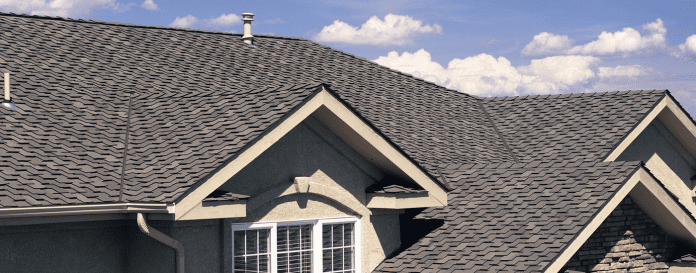You may not give your home’s roof much thought on a daily basis, but sun, wind, rain, and hail can all wreak havoc on your roof. Take some time to look over your roof and address any issues before they become big problems.
Granular Loss
Granular loss is when your asphalt shingles start to lose their protective granules. These granules are the exterior coating on asphalt roofing shingles that provide your home with an extra layer of protection. These granules prevent the two underlying layers of your roofing shingles, the asphalt and fiberglass mat, from being exposed to the elements.
Look for any missing or damaged shingles or sections of the roof that look like there may be valleys forming. Check the gutters and downspouts for excessive granular loss. When your shingles are installed, granular loss begins, and it occurs naturally due to weather and on a normal daily basis. Some granular loss is normal, but excessive amounts could indicate a larger issue.
Poor Ventilation
Blisters or bubbles on the shingles can be caused by moisture between the layers of shingles and heat building up beneath the roof due to poor ventilation in the attic.
Algae
In hot, humid climates you may see darker stains or streaks that could be caused by algae. The algae can cause damage to your shingles over time and should be removed by a professional.
Tree Branches
Check for any tree branches that could be hitting or rubbing against your gutters or roof and trim those branches back. If trees grow over your roof, regularly check your gutters, downspouts, and roof valleys for any tree debris that needs to be removed to allow proper drainage.
Leaks
Inside your home you can inspect your attic for leaks or dark areas. Leaks are most likely to show up around chimneys, vents, skylights, and valleys. Also check for mold on the underside of the roof decking. If your attic is poorly ventilated, it can trap moist air and cause mold. If you see any sagging between the rafters, you may have a long-term leak that is causing major damage and should be addressed.
Roof Replacement
If you need to replace your roof, have a professional come and inspect it to determine what the next steps will be. You’ll also want to be familiar with different roof materials. Asphalt shingles are the most common kind of shingles used on homes. Slate can also be used and is very durable. Slate does have a higher price point and needs a skilled installer. Metal roofing is durable and relatively lightweight, but can be noisy during rain or hailstorms.
Home Inspection
Many times during home inspection, different roof issues come up. Generally, if the roof doesn’t have any active leaks and it’s just an older roof that’s on its last legs (that might have to be changed in the next six months or year or two), the sellers are not responsible to give a credit because there are no active leaks. Keep this in mind when buying a home.
Roof Lifespan
A typical roof lasts between 25 and 50 years, but the precise amount of time varies significantly by roof type and property type. For example, a metal roofing system can last up to 75 years, while a rubber roof probably maxes out at the 50-year mark.



